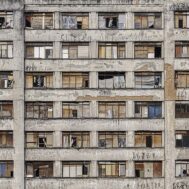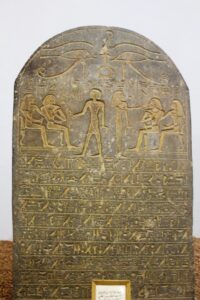
Stela of the chief of Teh-khet, Amenemhat, photo by Clemens Schmillen, Sudan National Museum, CC BY SA 4.0 International license.
In the latest development in Sudan’s protracted civil conflict, photos shared by cultural authorities show the looting of collections and destruction of the Sudan National Museum in Khartoum. Videos posted on social media in March 2025, following the Sudanese Armed Forces’ (SAF) recapture of the museum premises from the paramilitary Rapid Support Forces (RSF), depict empty galleries, shattered display cases, and large quantities of rubble strewn across the institution once recognized as Sudan’s most important cultural repository.
Questions about the safety of the museum’s holdings were publicly raised by numerous Sudanese and international heritage and museum professionals as early as June 2023, shortly after RSF fighters occupied the facility. At that time, at least eight mummies were reported destroyed by occupying soldiers and parts of the building suffered fire damage. These fears were substantiated in 2024 when satellite imagery appeared to show trucks loaded with artefacts leaving the museum. It looked like the RSF had not only taken over the museum buildings – but was actively coordinating looting operations. The RSF forces’ withdrawal from central Khartoum in March has made the scale of cultural loss tragically clear.
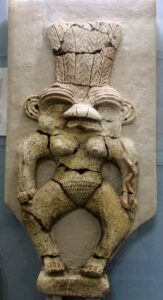
Female Demon Beset, photo by Clemens Schmillen, Sudan National Museum, CC BY SA 4.0 International license.
The Sudan National Museum housed an estimated 100,000 artifacts representing millennia of Sudanese heritage — from the early Nubian kingdoms and Kushite empire, to the Christian kingdoms of Alodia and Makuria, and the Islamic sultanates of Sennar and Darfur. Among its most valuable items were mummies dating to approximately 2500 BCE, some of the oldest and most archaeologically significant in the world, as well as royal Kushite treasures. The fate of the museum’s mounted wall paintings and murals removed from antique churches and ancient temples during the 1960-1980 International Campaign to Save the Monuments of Nubia is uncertain but reports say that little remains of the museum’s collections.
A post-conflict inspection conducted by curatorial personnel, including Elnzeer Tirab Abaker Haroun of the Ethnographic Museum, confirmed that the museum has been comprehensively looted. Videos show floors strewn with trash and the remains of broken cabinets and vitrines – only the largest stone statues, too heavy to move, are in place. The looters also broke into secured, restricted-access vaults used to store artifacts composed of gold and precious stones — suggesting the looters were well organized – or had time to become familiar with the institution’s security infrastructure and collection layout.
While the RSF is responsible for the latest phase of the museum’s pillaging, broader patterns of criminality and neglect by both the RSF and SAF have severely endangered Sudan’s cultural heritage since the outbreak of hostilities in April 2023. In 2023 and 2024, objects from the Museum of the Khalifa’s House in Omdurman, which held valuables particularly treasured by the Mahdist rulers of the 19th century, and the Nyala Museum in South Darfur were stolen by RSF fighters.
Both factions have been widely accused of violations of international humanitarian law, including destroying civilian infrastructure and deliberately targeting civilians, especially women, in acts amounting to in war crimes. The RSF in particular has operated with impunity in urban areas, converting cultural and civilian buildings into military positions.

Chalice of Sedeinga, National Museum of Sudan, Khartoum, 20 December 2019, Photo Sue Fleckney, CCA-SA 2.0 Generic license.
In response, the government’s SAF counteroffensives have often employed indiscriminate shelling and airstrikes, destroying built historic heritage and endangering protected cultural sites.
The Sudanese National Corporation for Antiquities and Museums (NCAM) has previously warned that several regional museums — including the Khalifa House Museum in Omdurman and the archaeological storage facilities in Meroë — are similarly vulnerable to looting, whether opportunistic or organized. Artifacts from the Sudan National Museum collections appear to have crossed borders to other African nations and may be attempted to be trafficked abroad, as has occurred in prior conflicts in the region.
Sudanese intellectuals and citizens have expressed their profound grief over the museum’s destruction, framing the loss as symbolic of the broader devastation wrought by the war. Hala al-Karib, a prominent women’s rights activist, described witnessing the museum’s desecration as one of the most painful experiences of the conflict. Trade unionist Shahenda Suliman told The Guardian that the museum’s emptiness mirrors the systemic destruction and displacement Sudanese society has suffered since 2023.
Former journalist Dallia Mohamed Abdelmoniem, herself displaced by the conflict, lamented that the war may permanently sever the nation from a tangible connection to its ancient past. She noted that appreciation for Sudan’s antiquity had only recently begun to flourish before being so violently interrupted.

Temple of Kumma: The ram-headed Khnum (left) and Tuthmosis III (center) running towards Hathor (right) offering her a lapwing. photo by Clemens Schmillen, Sudan National Museum, CC BY SA 4.0 International license.
UNESCO, the United Nations Educational, Scientific and Cultural Organization, has reiterated its appeal to international art dealers, museums, and customs authorities to refrain from trading in, or facilitating the movement of Sudanese cultural property looted from its museum or protected sites.
Although Sudanese antiquities are not in wide circulation, it is not unheard of to see Sudanese objects in trade. Since adoption of Sudan’s Antiquities Ordinance No. 2 of 1952, while possession and trade of antiquities was lawful, a license from its Commissioner for Archaeology has been required for sale of antiquities and for export.[1] Damaging or destroying archaeological sites, unpermitted excavation, and failing to report discovered objects are all prohibited under the same statute. Of course, theft or looting of objects from government custody violates multiple statutes.
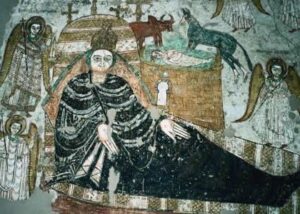
Image showing destruction at Sudan National Museum, courtesy of Sudanese National Corporation for Antiquities via The Guardian, March 31, 2025.
Fresco of Faras cathedral depicting the birth of Jesus, 10-11th C, Sudan National Museum, public domain.
Any objects stolen from Sudanese collections would already be illegal to trade or possess under current US, UK and EU law. While US and European dealers and European museums have built a positive track record of avoiding potentially looted objects and material from regions in conflict, the Middle Eastern market is far less transparent and may eventually be the destination for looted objects.
In light of this rampant destruction, there is an urgent need for the international community to raise awareness and to publicly share documentation identifying looted Sudanese artifacts in order to, where possible, recover them. Western museums have stepped up many times before to offer safe harbor to art at risk and should offer to do so again.
[1] Antiquities Ordinance No. 2 of 1952 (“Ordinance No. 2”), Article IV, unofficial translation available at IFAR, International Foundation for Art Research.
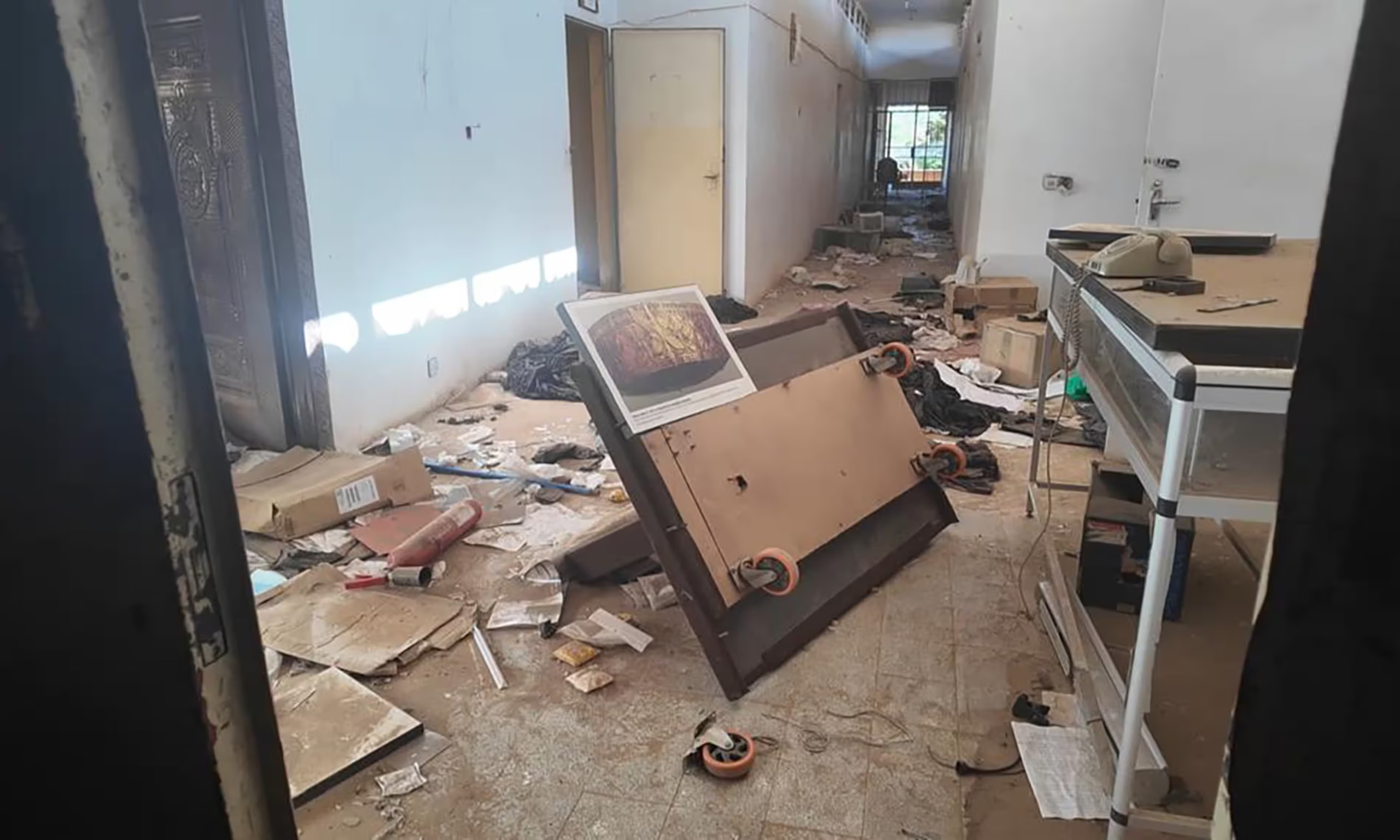 Looting and destruction of the Sudan National Museum by RSF paramilitaries. Photograph: Courtesy of Sudanese National Corporation for Antiquities, via The Guardian.
Looting and destruction of the Sudan National Museum by RSF paramilitaries. Photograph: Courtesy of Sudanese National Corporation for Antiquities, via The Guardian. 
